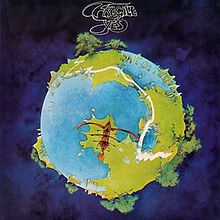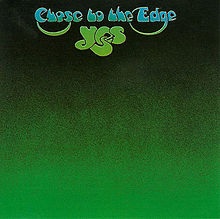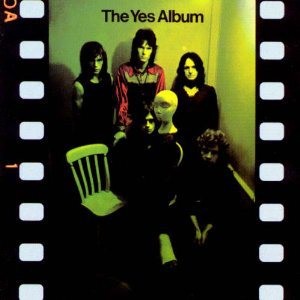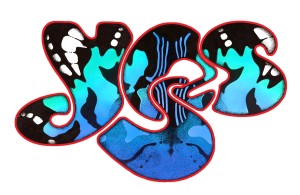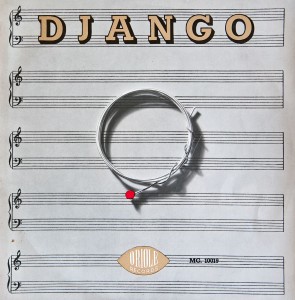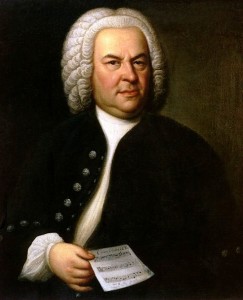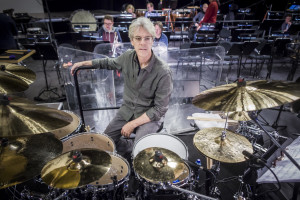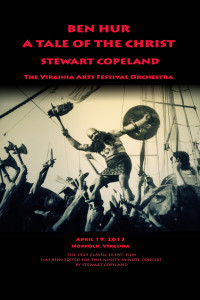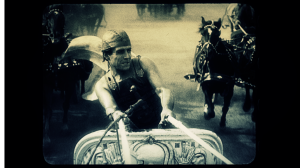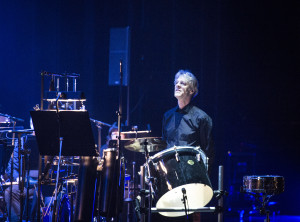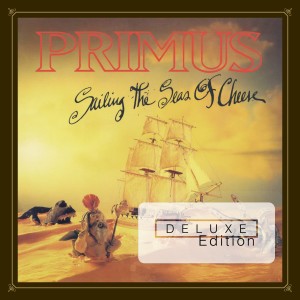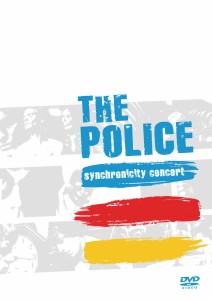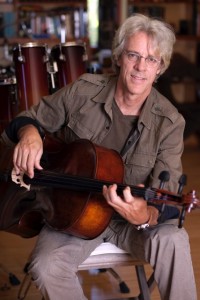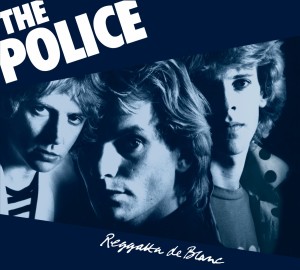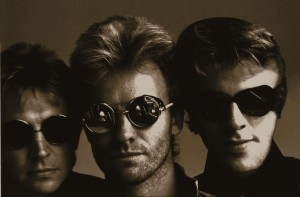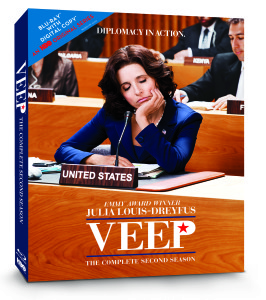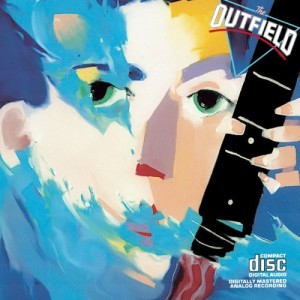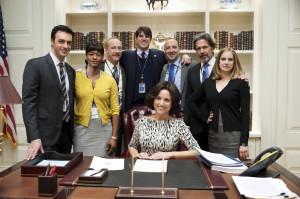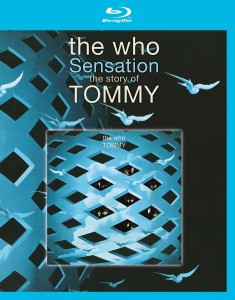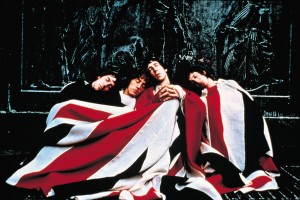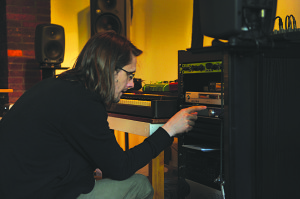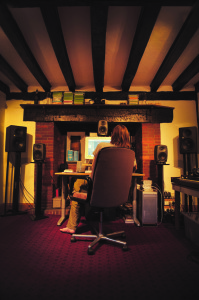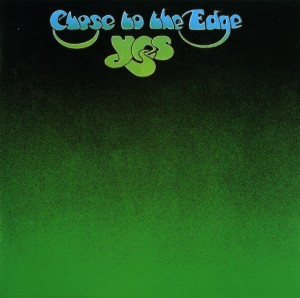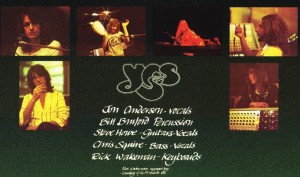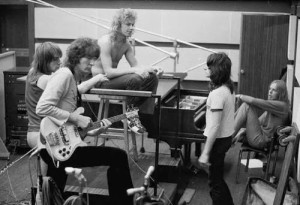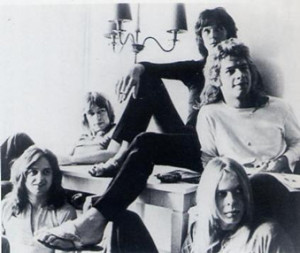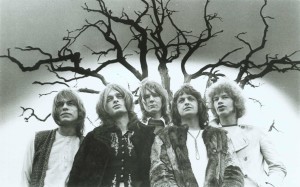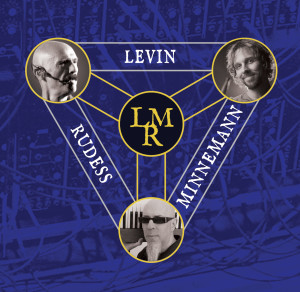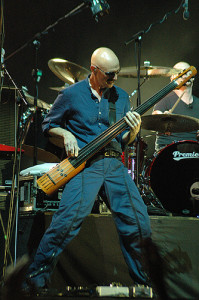“Yes likes challenges.” So says Yes guitarist Steve Howe, and the proof is in the output. The band has been out on the boards in the U.S. and Canada playing a set comprised of three full albums: The Yes Album, Close to the Edge, and Going for the One. On their upcoming summer tour in July and August, they’ll be doing two full albums: the first-ever full run-through of Fragile and Close to the Edge, in addition to an encore centered on the band’s greatest hits. Plus, an album with new lead singer Jon Davison, Heaven and Earth, is slated for a July release. And, of course, there are the sonically brilliant 5.1 mixes of Close to the Edge and The Yes Album on Blu-ray as masterminded by Steven Wilson — and more are on the way, with the band’s blessing. Howe, 67, and I ... Read More »]]>
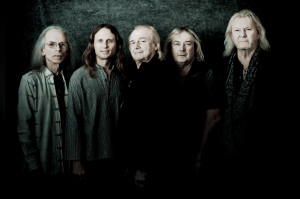
Going for the Five: Yes 2014, from left: Steve Howe, Jon Davison, Alan White, Geoff Downes, Chris Squire. Photo by Rob Shanahan.
“Yes likes challenges.” So says Yes guitarist Steve Howe, and the proof is in the output. The band has been out on the boards in the U.S. and Canada playing a set comprised of three full albums: The Yes Album, Close to the Edge, and Going for the One. On their upcoming summer tour in July and August, they’ll be doing two full albums: the first-ever full run-through of Fragile and Close to the Edge, in addition to an encore centered on the band’s greatest hits. Plus, an album with new lead singer Jon Davison, Heaven and Earth, is slated for a July release. And, of course, there are the sonically brilliant 5.1 mixes of Close to the Edge and The Yes Album on Blu-ray as masterminded by Steven Wilson — and more are on the way, with the band’s blessing. Howe, 67, and I talked about those 5.1 mixes, what we’ll hear on the new album, and what constitutes a musical legacy.
Mike Mettler: I’m so pleased to hear that you’re doing all of Fragile on the upcoming summer tour.
Steve Howe: Fragile is pretty accessible, and some of it we haven’t played for a helluva long time. It’s going to be a nice mix.
Mettler: Is there anything on it you’re just itching to play again?
Howe: Well, we all like “South Side of the Sky.” Things like “Five Percent For Nothing” are novelties because they’re so short. [“Five Percent” is 35 seconds long.] But we’ll dance through the entire album. It’s a challenge, and Yes likes challenges. Doing three albums was a big undertaking in itself, and we’ll get Fragile sorted. It’s really how close we get to the arrangements. We try to get as close as we can, but that makes different demands on different people, so I hope everybody is able to live up to it.
Mettler: I happen to think the surround-sound mix Steven Wilson did for Close to the Edge is one of the best ones I’ve ever heard. What did you think of it?
Howe: Yeah, it’s amazing. I was involved with some of the mixing, because he wanted some of my input. And since we were both in the U.K. at the same time, I got together with him to listen to some of it and talk about some of the details.
Mettler: What did you like the most about hearing this album in 5.1?
Howe: It’s not an easy question to answer. [laughs] He’s trying to get as close as he can to the original mix with what he was doing with the 5.1. At different times in my life, I’ve liked quadraphonic and 5.1, and so it’s really about having the hi-fi experience. And other times, it’s about having enough time for listening to things that way! But I admire him for doing it, and the label [Panegyric] for pushing to do it and giving us so many options in one release.
Mettler: Right — you have the needle drop, the updated mix, the original stereo, single edits, and the surround. The music on Edge is so enveloping to begin with that Steven’s 5.1 mix really puts us in the middle of what you guys were playing. Any moments you’d consider the most interesting?
Howe: You can hear the separation with the very fast organ playing at the beginning of “Close to the Edge.” It was overdubbed because Chris [Squire, bassist], Bill [Bruford, drummer], and I played together at the front end as a trio, and then we added Rick [Wakeman, keyboardist], who was playing remarkably fast — practically a double-speed version of the riff Chris and I played. But that kind of allows for the separation you can hear there.
Mettler: How involved were you with what Steven did for The Yes Album?
Howe: In a similar capacity. He wanted me to listen to what he did and then give my input. So I sat down with him and listened to it all. And before the Canadian tour started, I sat down with Steve for an afternoon and listened to [the next one Wilson is doing, which hasn’t been officially announced yet; sorry!—The SoundBard]. I did hear a few things, and they were able to take my comments and incorporate them as well as they could accommodate them. They’re very meticulous, in the way they want to match the original, or get as close to the original as humanly possible. Which in itself is a sort of paradox, because you have the original. [laughs] It’s also an unusual mix, but I’m very proud of Steve and that he’s going the whole distance. I’m just helping him where I can.
Mettler: He was very appreciative of you when he and I spoke about Edge in 5.1. He said having your input was invaluable to help keep things as faithful to the original as possible, and not, to use his words, “modernize it.” You were able to ground what he was doing.
Howe: That’s nice. On [the next one], there’s definitely a sonic improvement. There is a difference. It’s something that’s very, very hard to define — an openness to the higher registers of the music. It wasn’t easy doing all that with the technology of the time. Lining up every machine in the chain had to be perfect, and so did the phasing, the bias, the quality of the tape — it was all relying on so many things that are now blown away because everything is digital, you know. [laughs] It’s less reliant on lining up the accuracies of the tape, lining up engineers, lining up machines, the feed quality, and all the other things I mentioned. It was so boring then, and you just had to put up with it, but it was endless. The speed of the machines had to be so accurate to really be taken seriously, but nothing could ever be 100 percent perfect.
Mettler: There was a DVD-Audio 5.1 mix of Fragile in 2002. Do you think that’s an album Steven will get to revisit?
Howe: Maybe, yeah. That was one I mentioned to Steve. Although I appreciated what Tim [Weidner] did, I was unhappy that he included things that weren’t on the original record. Steven is only committed to having master parts on the recording — otherwise, it trivializes the idea. I was actually quite upset at what was on “Roundabout” — I mean, it’s fun that it’s different, but if it’s different, it’s wrong. I’m not too precious about it because not a lot of people heard it, but Steven’s remix will be thorough and consistent, and he will get around to Fragile. There are some issues with finding all of the masters, but we’ll get there.
Mettler: Is it open-ended that as many of the catalog masters you have in hand will get done in surround?
Howe: I don’t think we should say yea or nay yet, because there could be logistical things or even a question of taste. I mean, providing we don’t make a record sound worse [MM laughs], and we can make some of them sound even better. We’ve all got our favorite ones that we don’t like. I’m not going to say what it is, as there is an album like that which was disappointing sonically, and even the writing was a bit disappointing, and it’s in the ’70s —
Mettler: It wasn’t one that came out in 1978, was it?
Howe: [laughs] I’m not going to even go there! But there is one that’s like that sonically, structurally, and musically — everything about it. It’s not that it’s dreadful; it’s just that we didn’t quite get it right. I don’t know if a remix would make it right, but I really can’t say because I don’t think it could, because if you’re going to be true to the original, then you have to base it on the original.
Mettler: Well, what you could do is give people the original mix, just like you’ve done with Close to the Edge and The Yes Album — here’s the needle drop and the original stereo version, and now here’s the “updated” mix. Will we get to hear the new album, Heaven and Earth, in surround?
Howe: That’s a good idea. I mean, it’s funny that we’re doing music that’s 40 years old in 5.1, and yet we’ve just recorded Heaven and Earth and Fly From Here a few years ago [2011], and it might be more relevant to do 5.1 with those two releases. We’re a little backed up on time because of the touring, but maybe that could be a discussion later in the year so that we might have a 5.1 out by then. That’s a pretty cool idea.
Mettler: How would you characterize the sound of Heaven and Earth? You worked with Roy Thomas Baker as the producer.
Howe: I would say it sounds pretty different for us. It follows more the kind of material we’re playing with [current lead singer] Jon Davison and what he’s been writing, because Benoit David [vocalist on Fly From Here] didn’t really write with us. But this time, we are presenting a new writer alongside what Chris and Geoff [Downes, keyboardist] and I are writing. It’s the kind of an album that has a lot of freshness, and I think that’s quite a healthy thing. The cross-writing is quite interesting, as Jon has written with most of us. There’s quite a collaborative sense that Jon brought into play a lot. And his voice — we’ve gotten to see the effect of that element because of Roy Thomas Baker as we checked the mixes and got the whole feel. I’ve become quite happy with the album, and think it will be somewhat more of a surprise than Fly From Here.
Mettler: Do you remember the very first record you bought with your own money as a kid?
Howe: Yep! I do! There were two, if I’m allowed to mention two — there was Elvis Presley’s album, Rock ’n Roll [1956], with “Blue Suede Shoes” on it. I bought it from a friend who said, “I don’t really like this; do you want to buy it cheap?” And I said, “I’ll buy that!” And there was another friend of mine who had a 10-inch record with the picture of a guitar string on it, a Django Reinhardt record [Django, 1954], and I bought that too. Got them more or less at the same time, and they’re both records that have stayed with me my entire life. And I virtually couldn’t do without either of them. They’re the most remarkable records, because they went so deep to my personality as a guitarist and a musician.
Mettler: You can hear it as part of your DNA.
Howe: It is. Those records are very, very important. But then I bought Teensville by Chet Atkins [1960], and that brought some more into it. And as I’ve said before, Chet Atkins is the most central, singular great guitarists I’ve heard. I’m big on his early stuff, especially the fingerpicking.
Mettler: Earlier, you mentioned how important separation is in a surround mix. Your final thoughts on that idea?
Howe: Surround’s a funny animal. It’s really about separation. The separation is what makes for a good surround mix. There’s some great separation in these mixes, and I suppose that’s the main point of having these 5.1 mixes. Sometimes there’s an emphasis on reverb and an emphasis on “theater”— but 5.1 is also for theater, so in a way, we’re redesigning music around what’s made for a theater. So I say, great! Every time Bach is recorded from a cylinder to a 78 to a 33 to a 45 to a CD to a MiniDisc to an 8-track to a cassette [both laugh] — I mean, Bach’s music has gone through the same kind of transition that our music is going through. It’s keeping up with the times. It’s being reinterpreted by other people, redesigned through great recordings that can be rereleased over time.
And certainly J.S. Bach has one of the greatest, most fascinating histories of being reinterpreted by people like Glenn Gould and many, many others. Bach was one of the most amazing geniuses music has ever had because he had to do all that himself. He was thinking that music written for an organ wouldn’t necessarily stay on an organ — maybe there could be an arrangement for a choir! And that’s what he did himself. He was totally unprecious about the format. The format of the music isn’t important — what’s important is the music. And if it can transcend the performance, then I think you’ve got music that evidently will last.
]]>Never let it be said that Stewart Copeland has idle hands. The innovative Police percussionist and ace composer has been working tirelessly on composing a soundtrack to MGM’s 1925 silent film Ben-Hur: A Tale of the Christ, which, in addition to being a legendary broad-sweeping and groundbreaking epic tale, is on record as being the most expensive film made in the silent era. Copeland’s score receives its world premiere Easter weekend on April 19 at the Virginia Arts Festival in Norfolk, Virginia, where it will accompany his 90-minute edit of the movie.
Recently, Copeland, 61, and I discussed how restoring Ben-Hur was both invigorating and taxing, his philosophy about surround-sound scoring, some of the secrets behind his infamous snare drum sound, and a few Police-related matters.
Mike Mettler: I’m extremely fascinated about your Ben-Hur restoration.
Stewart Copeland: Well, it is a humdinger. It all began with an ... Read More »]]>
Never let it be said that Stewart Copeland has idle hands. The innovative Police percussionist and ace composer has been working tirelessly on composing a soundtrack to MGM’s 1925 silent film Ben-Hur: A Tale of the Christ, which, in addition to being a legendary broad-sweeping and groundbreaking epic tale, is on record as being the most expensive film made in the silent era. Copeland’s score receives its world premiere Easter weekend on April 19 at the Virginia Arts Festival in Norfolk, Virginia, where it will accompany his 90-minute edit of the movie.
Recently, Copeland, 61, and I discussed how restoring Ben-Hur was both invigorating and taxing, his philosophy about surround-sound scoring, some of the secrets behind his infamous snare drum sound, and a few Police-related matters.
Mike Mettler: I’m extremely fascinated about your Ben-Hur restoration.
Stewart Copeland: Well, it is a humdinger. It all began with an arena tour [in 2009] where they staged Ben-Hur live in the arenas with a full-on chariot race and pirate battle; the whole schmear.
Mettler: Why did you decide to tackle this as a project?
Copeland: It was an incoming call way back when the arena show went up. I wasn’t a particular fan of Ben-Hur — yet. But as I got into it with the book, the show, and the two movies — the Charlton Heston one [1959], and the 1925 one, the one I worked on — I got deep into it.
Mettler: I was looking at some of the 1925 footage you posted online, and it’s astounding what was done back then. I kept thinking, “This was shot in 1925?”
Copeland: They had to do it all in front of the camera! It was the biggest movies of the silent era. It cost 4 million [said with Dr. Evil inflection] dollars. Getting the print out of deep freeze was an adventure too. It took a week to defrost this 80-year-old piece of celluloid, and the last time it was seen was in the ’60s, when they burned a video from which the DVD that’s out there was derived. That’s what I originally cut up to make my version of the movie, because the music I wrote had to match with the movie I recut. After years of pursuing this at Warner Bros. and navigating the labyrinthian divisions of this giant corporation that owns this material, it just took a while to get from one division to the other and work its way through the system to get to the point where I could actually get my hands on the original piece of celluloid. It looks like a hybrid they put together from two or three prints that were out there in the theaters. They got the cleanest footage from each one, and stuck it all together. The movie was made in 1925, they re-released it in the ’30s, and it’s got a checkered history.
The version I’ve got, I had to curate. It’s not actually black and white, it’s kind of gray and white at this point. [both laugh] So I had to get deep into the balance of the blacks and the whites and process every single shot of the movie, as well as cut down a 2½-hour movie down to 90 minutes, which was an adventure. Having done that, every single shot in the movie had to be treated. Different cameras were used, running somewhere between 18 and 22 frames per second, depending on which camera they were using, and who was cranking that day.
It’s really something, but technology aside, what they did in front of the camera was colossal. The burning Roman galleons crashing into each other, the thousands of extras blazing away and falling into the sea — a few people died in that because the ships did actually catch fire. The production value, the scale, and the spectacle is all really something else. You’re dealing with the frame shape and things like that, which are really small compared to the punch of the movie itself.
Mettler: You’re literally turning into your own Criterion Collection division with this project.
Copeland: No one has ever done it quite like this because I’m presenting the film as a concert, which has directed the way I’ve had to do the edit. And there will be those haters out there, those purists who will come after me with pitchforks, and I’ll try to mollify them as such by saying the original is still there in the box set with the Charlton Heston movie. And that’s definitely worth checking out, but the film looks much better now. Going straight back to the original from digital, there’s just a higher resolution. It looks much better than it did when they transferred it to video, which is a terrible medium.
Mettler: Will you record any of the performances for release on DVD or Blu-ray?
Copeland: At some point. I would not be surprised if we did that.
Mettler: Considering you compositional skills, I’d love to hear a full surround-sound mix.
Copeland: Well, the thing is, at some point, it crosses the line where I’m taking [director] Fred Niblo’s masterpiece and carving it up in a way that he may or may not have approved of. And I think I’m on the right side of the line when I’m doing a concert with a big orchestra, and the drums. The film is a part of that, and I’m not making any representation that this is his movie.
But if, for instance, someone were to record the concert to put out a DVD, that would require a whole other examination of the conscience. I have enormous respect for Fred Niblo. I’m very, very respectful while I’m screwing around with what he did. I’m trying to follow his logic.
Mettler: Does surround sound interest you as a film composer?
Copeland: Not so much, actually. I found that when I was working in film, whenever music came out of more than two speakers, it kind of lost its punch. There’s something to do with phasing, and there’s a lot of voodoo connected with how do you get it to sound good in 5.1 or 7.1. I’ve never succeeded. Every time we threw it [a score] to surround sound, it lost its punch. It’s coming out of stereo, or LCR — left, center, right — in front of you, then it kicks.
That’s just an audio thing. It’s counterintuitive. You would think the music would sound great, having it coming from all around you. And indeed it does, if you’re sitting in the middle of the orchestra. But the way speakers work — I just never quite succeeded in keeping the punch while having the surround.
Mettler: I agree that feeling like you’re in the middle of an orchestra, or any performance, is the best use of surround.
Copeland: Yeah, the thing is, it can be done. A buddy of mine in Primus, Les Claypool, really got into it. He played me some surround he did where it really does rock. And that’s Primus: a heavy, hairy rock band.
Mettler: I just talked to Les a few weeks ago, in fact. I think the surround mix he did last year for the Deluxe Edition of [1991's] Sailing the Seas of Cheese is fantastically immersive.
Copeland: Ok, yes, that one works. He had already made the record, and he’s gone back in and devoted himself entirely to achieve a good result in surround. That’s a mission all unto itself. And as he showed there, it can be done.
Mettler: Looking at it that way, would you be able to do that with some of your own work from the past, like, say, The Rhythmatist [1985]?
Copeland: Years ago, too many years ago, we did surround for a live Police album.
Mettler: Right, the Syncronicity Concert.
Copeland: From back in the day [1984]. At that time, it seemed like it was ok. You be the judge. We did it here in Los Angeles, and I don’t think we had any particular expertise as to how to really use that medium. To be honest and fair, it’s probably kind of hit and miss.
Mettler: From my viewpoint, a studio Police track like “Secret Journey” [from 1981's Ghost in the Machine] would be an amazing thing to hear in surround, considering all the subtleties and nuances in it.
Copeland: Yeah. Well, there is a world of audiophiles out there. But my kids, they don’t care about quality. Whatever comes out of their laptop speakers is just fine for them. And there’s something important there, and that is: it’s the music, not just the audio. I remember with Sgt. Pepper — I’m showing my age here — I heard it on the radio, and it sounded great. But the first time I got the album home, and somebody had stereophonic sound, you listened to it with the lights out, and holy moly, what a new experience that was!
Mettler: Do you still like the vinyl medium?
Copeland: I like the sound of it, but I’m much more enamored with the sound of valve amplifiers. And that’s not because they’re accurate, or anything like that — there’s a sound, like an aroma. It’s a form of distortion, in fact, but it has associations that are good associations, and that pumping sound out of a valve amplifier is just a beautiful thing. You don’t really think of it until you turn on an old tube radio, and it just pumps in a cool kind of way.
I’m told by the people who know that that groove in the vinyl has higher resolution than 64k digital, and if you say so… Well, as you know, I’ve lived through several technologies of recording. When I first started, 8-track was a big deal. Then it was 16-track, and it was like, “Oh my God, what are we going to do with all these tracks?” Then it was 24, and then they invented slave reels, and it was unlimited. Then the first Mitsubishi rolled into the studio — digital! Unlimited! 48 tracks! Every time you bounced tracks, you didn’t lose anything. And it went on and on and on. From there, they invented computers — which sounds like I’m joking, but no. They invented computers that were available and smaller than a house.
So that’s three generations right there that audio has gone through, and I’m not that sentimental. I love the sound of a valve amplifier, but you cannot persuade me to go back to an old Studer 24-track — no way, no how. There’s an app for that. That love people have for the way drums slap the tape, you know, the sound you get from that, which is overloading the tape — there’s an app for that, and a pretty convincing app. Meanwhile, I’m not getting out the scissors and cutting that 2-inch tape and carrying around those slave reels — no way, no how. I’m ProTools!
Mettler: So no more razor blades for you, Stewart?
Copeland: No more! Never! I say that having lived through the hell of that Paleolithic era of recording. I’m real happy with modern recording techniques. Because that allows me to concentrate of making cool music, and getting to that cool figure that I want. I can cut straight to the chase of making new music without the technology that has interesting colors but slows the process down.
Mettler: The precision of your snare drum sound has always been a hallmark. Is that something you feel you can capture better now with new technology?
Copeland: No, what I can capture now better is what I’m doing with the snare drum and how I play the snare drum: Getting a good take of me banging on the snare drum can be done much more easily than getting a take on tape. In other words, I can hit that snare drum better with modern technology. Maybe the sound that gets recorded we can argue about whether it’s as good or not. I think it’s pretty good.
Mettler: Dou you still have the same snare from back in the day?
Copeland: Yes, I’ve still got the snare drum I used for all of those recordings right here in my studio, right in my drum set. I’ve got a really romantic name for it: Snare. Sing songs about… [pauses] The Snare. It is a really great drum. It’s kind of a fluke. I’ve had it cloned. My drum company, Tama, has rebuilt that snare drum — the metallurgy, the amount of brass, everything — so I’ve actually got five of them now. But the one on my drum set is the one.
Mettler: Where did you find it?
Copeland: I don’t even know how it got into my collection. Just one day, it was my snare drum, and neither I nor my tech can remember where it first appeared.
Mettler: What makes that snare so special?
Copeland: The thing about it was, I just tuned it really high. It was in an era where the old wave was just going out and the producers would talk about getting a “fatback.” And I’d say, “Fatback? Uhh, what am I gonna do with a fatback?” I remember recording my first album in the ’70s, and the record company threw it out and went and got some new producers to record it “right.” Well, they kicked me out of the studio for a few hours while they got “my” drum sound. They tuned the drums and miked them up. “Ok, they’re sounding great, so now you can play.” And they sounded awful. It was a fatback: [makes thudding noises]. Oh God, dead drums. That was the fashion of the day. So when I had my own band, The Police, I could tune myself. I knew what drums should sound like, and it ain’t that! At the time — it’s not such a big deal now — but at the time, that high-pitched, cracking snare drum was way out of line.
Mettler: What would be the first recorded example where you felt, “Yeah, I totally got it right”? The way it should be?
Copeland: I think the second Police album is my favorite-sounding album. That would be Regatta de Blanc [1979].
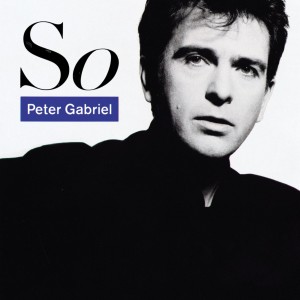
Mettler: Can’t argue with that. One of my favorite recorded moments of yours is the hi-hat performance on Peter Gabriel’s “Red Rain” [on 1986’s So]. How did that come about?
Copeland: Ah yes. [chuckles] Well, he called up. We knew each other socially, and I was mentioning how I was trying to figure out other ways how to supply the 16th notes in any given song. And the reason we were talking was he already had the same epiphany: “How about I tell the drummer he gets no cymbals?” I was telling him about other things I used like pots and pans, and he said, “Well, come on down and give me some of that!”
So I did! When I went down to his studio there in Bath [Ashcombe Studios], I wasn’t playing on the record, but just on some very weird, vague kind of riffs that he had going. He had Tony Levin in there on bass and a couple other musicians, and we were just kind of screwing around, and later — a long time later — I didn’t recognize any of the songs, because I hadn’t heard any of the songs until the record came out! All I heard was just us doing riffs and grooves, which he cut up and later added lyrics to and wrote songs around, and added chords and actual music. And so, it’s odd. Which tracks did I play on on that album? I’m not even sure! Am I even in there? Peter says so. Ok, I’ll take the credit. I’ve got a platinum album from it, so I guess it was my hi-hat.
Mettler: So is one of the best-sounding recordings from the ’80s.
Copeland: Peter’s a real audiophile. He is really into recording techniques, and just getting it to really sizzle. I’m in too much of a hurry for that, so I’ve been working my entire career with Jeff Seitz for that stuff. It’s a symbiotic relationship. I just breeze on through, but I gotta make it sound good Nowadays. I’m a one-man show in here. Jeff, my engineer, is one of my closest, longest friends, but it’s pretty much social now. Once again, with technology, I’m just in here, and I go straight to it. Click-click-click on the alphanumeric, and I don’t even need any intermediaries anymore.
Mettler: I talked to Andy Summers recently about his new band, the Circa Zero project —
Copeland: It’s pretty good! Ol’ Andy’s raging on the guitar! I love hearing that!
Mettler: He even joked that if The Police ever did another tour, it would probably be a Las Vegas show.
Copeland: Oh, I love the sound of that! Hopefully by such a time, decades from now, Pearl Jam will be playing Vegas, and it’ll be cool. That would be so sweet to roll out of your swank hotel room and go right down to the stage. It’s the fun part of playing without the un-fun part, which is the travel. Going through airports every day — that’s a pain. Playing the same room every night — that’s what we’re here for! That whole Vegas residency thing — all of us super-hip cats who wouldn’t be caught dead playing Vegas are actually full of envy. Oh yeah, book me a flight for Vegas! I’m not sure it’s the right thing for The Police to be doing, but it sounds like a sweet gig.
Mettler: Will The Police be doing anything else?
Copeland: No, I don’t think so.
Mettler: You’ve put the lid on it?
Copeland: Yeah, with the best of intentions. We’re all pretty busy.
Mettler: Well, good luck with Ben-Hur. And to think you owe it all to Francis Ford Coppola. [Coppola asked Copeland to score his 1983 film, Rumble Fish.]
Copeland: Yes! Dear Uncle Francis, this is what you wrought! All your fault. He’s always been very supportive. He saw Oysterhead, he came to the San Francisco Ballet. I’m very proud to have him as a mentor.
Mettler: Last question: What’s the future of music delivery, as you see it?
Copeland: The music will be an implant, inside your brain. They’ll just inject it in one ear with a syringe, and presto!
]]>Don’t mess with a man who knows how to guard a bag with his life. In this case, that would be Gary Walsh, the body man/personal aide played by Tony Hale on HBO’s Emmy-winning Veep, which sees its second season out on Blu-ray, DVD, and digital download on March 25 and its third season premiere on April 6. Here, we talk about Gary’s undying love for VP Selina Meyer (Julia Louis-Dreyfus), what’s ahead for Season 3, and how he would handle Frank Underwood from House of Cards.
Mike Mettler: First, congratulations on your Emmy win. [Hale won Outstanding Supporting Actor in a Comedy Series for Veep in 2013.] The obvious and most important question is: Where do you keep it?
Tony Hale: It is in my kitchen. My wife, who’s a makeup artist, also has an Emmy. Hers is on ... Read More »]]>
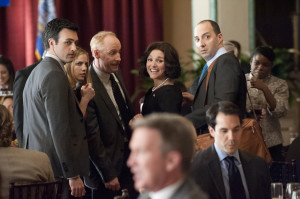
Close to You: Hale in his role as Gary Walsh (far right), next to his beloved Veep, Selina Meyer (Julia Louis-Dreyfus).
Don’t mess with a man who knows how to guard a bag with his life. In this case, that would be Gary Walsh, the body man/personal aide played by Tony Hale on HBO’s Emmy-winning Veep, which sees its second season out on Blu-ray, DVD, and digital download on March 25 and its third season premiere on April 6. Here, we talk about Gary’s undying love for VP Selina Meyer (Julia Louis-Dreyfus), what’s ahead for Season 3, and how he would handle Frank Underwood from House of Cards.
Mike Mettler: First, congratulations on your Emmy win. [Hale won Outstanding Supporting Actor in a Comedy Series for Veep in 2013.] The obvious and most important question is: Where do you keep it?
Tony Hale: It is in my kitchen. My wife, who’s a makeup artist, also has an Emmy. Hers is on the top shelf, and mine is on the bottom shelf.
Mettler: That’s nice. You have them properly prioritized, in other words.
Hale: Yes, exactly.
Mettler: Let’s get into what happened during Season 2. You got to do some different things, like go abroad to Helsinki [Episode 5]. But I have to say I really liked the “garbage guarding” incident [Episode 7, “Shutdown”], if we can call it that…
Hale: Oh yes. Gary was the only one who knew what was in that garbage bag [i.e., some “evidence” related to Selina reconnecting with her ex-husband]. And that really shows how he will go to the absolute nastiest level for her.
Mettler: There’s no end he will not go to —
Hale: Noooo! There’s no end.
Mettler: The sneeze bullet he took in Season 1 [Episode 2] is like nothing compared to that.
Hale: No, that’s nothing.
Mettler: What would happen if he had to take a real bullet?
Hale: There’s a line in that episode where Dan [Egan, deputy director of communications, played by Reid Scott] was like, “Would you take a bullet for the Veep, Gary?” And Dan’s like, “That’s what security guards do.” But I don’t know — I think he would do it. Gary is so delusional in his thinking that if someone asked him, “Would you take a bullet for Selina?” he’d be like, “I already did,” because that’s what the sneeze bullet was to him.
Mettler: Anything that gets in the way of you being in her hair and neck region — you just can’t have that.
Hale: Exactly! Anything that gets me closer to her, that’s always a good thing. He’d stay in that arena for the rest of his life. His dream is for them to be married.
Mettler: Ok, let’s do a hypothetical. If Frank Underwood of House of Cards met Selina, what would Gary do?
Hale: (laughs) Oh, I’ll tell you what Gary would do. Well, Frank would already know Gary is delusional. He’s incredibly intuitive. Even though he may not know there’s a lot of domestic abuse going on between Gary and Selina, he smells a rat. And Gary would say, “You just steer clear. You stay clear of her.” Gary would give Frank a piece of his mind. You don’t mess with his woman.
Mettler: Would Gary get physical if he had to?
Hale: Oh, absolutely. But he might get in a little bit of a trance with Claire [Underwood]. She might get Gary wrapped around her finger. But he’d turn it on Frank. He’d throw down.
Mettler: I don’t want to spoil anything if you haven’t seen all of Season 2 yet, but there could be a three- or four-way connection there.
Hale: I’m on Episode 4 now. Every single time an episode ends, I’m like, “This is the darkest series ever.”
Mettler: I won’t say another word. How do you keep Gary’s relationship with Selina different from the one Buster Bluth, the character you play on that other show on Netflix, Arrested Development, has with his main female foil, his mother Lucille [played by Jessica Walter]?
Hale: Considering how many thousands of panic attacks Buster has every day, he would just be shaking and rocking in the corner. But Gary, he steps up for his woman. He’s not afraid to step up if there’s possible potential harm.
Mettler: Well, Gary has “a man’s voice,” as he’s said.
Hale: (laughs) Yes, he does.
Mettler: He’d literally take “the hook” for her.
Hale: Buster, on the other hand, would not step inside The White House.
Mettler: So if Liza Minnelli shows up as Gary’s mother, then we’ve got the perfect circle.
Hale: (laughs) Oh, wait, Liza needs to guest on Veep! Wouldn’t that be fun? Gary would self-explode.
Mettler: Will we ever get to hear Gary say, “I’ve made a huge mistake”? Would he ever think he’s made a huge mistake?
Hale: Well, there was that time in Season 1 where he was going to get Selina’s pregnancy test at the pharmacy while wearing his White House badge [Episode 6]. That was a suicidal day for him, as I remember.
Mettler: I always want to call him a bag man, though maybe that connotates something else. Well, it’s kind of the same — body man, bag man. That Leviathan bag is something else.
Hale: That bag of his — not only is it Linus’s blanket, it’s the only source of control he has in a life that’s violently out of control. There are like 60 pockets sown in there with different textures. Everything else is a disaster but he has control over that, which is why it was so hard for him when she gifted him with a new bag. (both laugh) I mean, his whole foundation crumbled after that.
Mettler: What would we find in Tony’s bag, Chap Stick?
Hale: I will say that Gary would be humiliated to see what Tony Hale has in his bag. He has a lot of empty water bottles, scripts for the day —maybe — and I think he has Trident. (both laugh) Oh, it is sad. Gary would never speak to me, in fact. He would shame me to no end. It would not be pretty.
Mettler: What does listening to Rage Against the Machine do for Gary?
Hale: Gary lives a servitude life, and he loves Selina, and he tries to be happy and peaceful and positive. But Rage Against the Machine — I mean, he’s gotta express himself somewhere.
Mettler: Now, as for you, Tony, what was the first record or CD you ever bought yourself?
Hale: Oh my gosh, dude! What was the first, oh, wow… I remember listening to, in middle school… (pauses) The Outfield…?
Mettler: Oh yeah, Play Deep, probably.
Hale: Yep. And Tears for Fears. Gosh, that’s really going back. I was never really into hair bands, like Mötley Crüe and all those guys. But I do remember The Outfield, Tears for Fears, all that stuff.
Mettler: How about now — do you have time to listen to music?
Hale: Well, I love Spotify. I love it. I’ve got more folksy stuff — Jack Johnson, kind of easy listening. I like easy, alternative-listening kind of rock.
Mettler: So really the opposite of Gary’s Raging and Avenging Sevenfolding and whatever else he’s got lined up.
Hale: I can see Gary doing some karate on the side, taking a lot of martial arts classes at night.
Mettler: In this Netflix, Blu-ray, binge-watching kind of world, is there a preferred way you’d like people to watch Veep?
Hale: I’m not a binge-watcher. Binge-watching is too overwhelming for me. I like to separate. My wife and I, we’ll watch a few episodes of House of Cards and then we’ll go to something else, and then go back to it. That’s what I did with Arrested Development when it came out on Netflix. There was so much information coming at you. I like to spread it out.
Mettler: It’s like an ebb and flow. My wife and I do something similar, like how we power-watched Banshee. Sometimes you need a tone break because it’s so heavy.
Hale: Too much! You get to savor it even more, and really appreciate it.
Mettler: That’s what it was like with True Detective. I didn’t want to watch it all at once.
Hale: Ohhhhh! I know! I can’t wait to do that one! Also, I can’t do two heavy shows at once. After we’re done with House of Cards, we’ll do True Detective.
Mettler: I think we did an episode of Archer after a Banshee mini-marathon the other night, to lighten it up.
Hale: Or you could throw in a Top Chef. Gary would love to be on Top Chef.
Mettler: Yeah, he does have the cooking skills for it. Ok, to wrap up, give me a nice Season 3 teaser. Selina’s presidential bid is well underway.
Hale: Yes, she’s leaving The Oval Office to go on the campaign trail and meet investors to fund it, and to the people in her office — well, except for Gary, who worships her; to him, she’s Jesus — but they’re all looking at it like, “You want to give money to this?” They know the truth. (chuckles) And I think even though Gary loves his job, he’s just trying to exercise his muscles and try out some new responsibilities. And, as usual… (pauses) it fails miserably.
Mettler: Well, I hope Gary can win something once he gets into The Oval Office, so to speak.
Hale: He’s winning her. He gets to be with her every day. So everything’s already roses.
]]>“Do you like good music?”
True, it’s a simple question with a fairly obvious answer, but when it’s posed by Michael “White Lightning” McDonald at the outset of “Sweet Soul Music,” you can’t help but wanna get up and testify a hearty “yeahhhh!” That’s but one of many call-and-response-worthy moments to be found on The Dukes of September: Live at Lincoln Center, released by 429 Records on Blu-ray and DVD on March 18.
The Dukes of September comprise of the core trio of Steely Dan’s Donald Fagen, The Doobie Brothers’ Michael McDonald, and Boz Scaggs. All three have worked together in various roles and incarnations over the years, participated in the New York Rock and Soul Revue, and have toured collectively as the Dukes in 2010 and 2012. This 90-minute performance was shot in November 2012 in New York at the ... Read More »]]>
“Do you like good music?”
True, it’s a simple question with a fairly obvious answer, but when it’s posed by Michael “White Lightning” McDonald at the outset of “Sweet Soul Music,” you can’t help but wanna get up and testify a hearty “yeahhhh!” That’s but one of many call-and-response-worthy moments to be found on The Dukes of September: Live at Lincoln Center, released by 429 Records on Blu-ray and DVD on March 18.
The Dukes of September comprise of the core trio of Steely Dan’s Donald Fagen, The Doobie Brothers’ Michael McDonald, and Boz Scaggs. All three have worked together in various roles and incarnations over the years, participated in the New York Rock and Soul Revue, and have toured collectively as the Dukes in 2010 and 2012. This 90-minute performance was shot in November 2012 in New York at the always effervescent Lincoln Center, and you may also start seeing this gig show up on PBS on Great Performances as well as during March pledge drives.
In addition to a fair share of fan favorites — the songs Fagen refers to as the ones they did for sake of “the TV Babies” in his droll 2013 memoir, Eminent Hipsters — the Dukes also put mighty fine spins on some R&B, soul, and blues classics.
Still, the best moments come when the Dukes strut their own stuff, as buttressed by a sharp nine-piece band, essentially comprised of Steely Dan’s touring outfit. Scaggs shows serious blues chops on a cover of Muddy Waters’ (by way of Willie Dixon’s) “The Same Thing,” with ace guitarist Jon Herington playing ring-finger slide as tasty as Bonnie Raitt does. Herington is the Dukes’ secret weapon, as he blazes a formidable trail by shifting his tone and approach on a dime during “What a Fool Believes,” “Hey Nineteen,” and especially with his wah-laden solo during the final encore, “Them Changes.” His masterfully blazing runs during “Reelin’ in the Years” get an on-camera nod and “yeah!” of approval from Fagen.
One of Scaggs’ signature tunes, “Lowdown,” receives a standing ovation, and with good reason. The song opens with a tight hi-hat and snare groove laid down by Shannon Forrest, and the “wonder wonder wonder” harmony later repeated by background vocalists Carolyn Leonhardt and Monet Owens is pushed back just enough in the mix. Scaggs’ vocals have just the right growl, and Michael Leonhardt’s trumpet solo is of Freddie Hubbard caliber.
After that, McDonald literally goes to church in “Takin’ It to the Streets,” getting lost in the soulful testifying of his lyrics, while Walt Weiskopf’s sweet tenor sax sets the tune’s soulful bed. In the encore, Fagen unravels some fine “Pretzel Logic,” with each Duke taking a verse. “These days are gone forever, over a long time ago,” they all harmonize. (Say it ain’t so, folks — but maybe it is so.)
The disc’s overall sound — recorded and mixed by Patrick Dillett — is quite clean and front-stage-centric, though audience applause appears after every song in the rear channels (and you can sometimes hear smatterings of audience shout-outs and song requests between songs or during the Dukes’ intro patter). There are no extras included.
I’m not quite sure why the long-buried HD DVD logo appears on the cover packaging, spine, and in the booklet, but that’s just a quibble. Do you like good music? Of course you do. Let The Dukes of September remind you just exactly how much.
]]>“I felt the band, and myself as a composer, deserved one big, last splurge,” says Pete Townshend at the outset of The Who – Sensation – The Story of Tommy (Eagle Vision). And the key to getting there, he adds, was to do “an album as a piece of art.” Enter Tommy, the groundbreaking 1969 rock opera that raised the album-as-artform bar set by The Beatles’ Sgt. Pepper’s Lonely Hearts Club Band just 2 years earlier. Released on Blu-ray and DVD on March 11, Sensation chronicles the trajectory of a band that catapulted from a buzzworthy pop act to an international, well, sensation, thanks to the depth of Townshend’s tale of a deaf, dumb, and blind kid who did quite a bit more than sure play a mean pinball.
On Sensation, Townshend, singer Roger Daltrey, and other Who principals thoughtfully dissect Tommy ... Read More »]]>
“I felt the band, and myself as a composer, deserved one big, last splurge,” says Pete Townshend at the outset of The Who – Sensation – The Story of Tommy (Eagle Vision). And the key to getting there, he adds, was to do “an album as a piece of art.” Enter Tommy, the groundbreaking 1969 rock opera that raised the album-as-artform bar set by The Beatles’ Sgt. Pepper’s Lonely Hearts Club Band just 2 years earlier. Released on Blu-ray and DVD on March 11, Sensation chronicles the trajectory of a band that catapulted from a buzzworthy pop act to an international, well, sensation, thanks to the depth of Townshend’s tale of a deaf, dumb, and blind kid who did quite a bit more than sure play a mean pinball.
On Sensation, Townshend, singer Roger Daltrey, and other Who principals thoughtfully dissect Tommy and its ongoing impact. Daltrey notes there was always something “mathematical” about the chemistry of four distinct individuals who somehow managed to always come together sonically. And speaking of sonics, Townshend admits that engineer Damon Lyon-Shaw’s decision to bring Daltrey’s vocals to the forefront of the final session mix was the right call, because his interpretation of young Tommy’s story needed to be the album’s linchpin. The best aural example of that decision comes when Daltrey, shown sitting in front of a mixing console, moves some faders to isolate his impassioned “see me, feel me, touch me, heal me” mantra from the overall mix, which lets you hear just what Townshend did when he got to the studio the day this passage was recorded. Once Townshend took it all in, he knew there was no question about who he was going to enable to sing those key words — key words the songwriter had initially envisioned singing himself.
And if you’re wondering when The Who truly kicked it all into sonic overdrive, their May 1969 debut of Tommy at Ronnie Scott’s Jazz Club in London, in a ferocious set literally driven by its cacophonous volume level, embedded (to use Daltrey’s word) the passionate, vengeful animus that became The Who’s live signature from that point forward.
Bonus footage consists of The Who performing about half of Tommy in black-and-white on the Beat Club on September 27, 1969 in Bremen, Germany, along with a few interview segments with Townshend interspersed in the midst of the proceedings (complete with German subtitles). Be sure to keep an eye on the antics of the ever-playful Keith Moon and marvel at bassist John Entwistle’s, er, bone-jarring outfit.
No doubt about it: Sensation will take you on an Amazing Journey into discovering the universal yet individual enlightenment that comes from immersing yourself in The Who’s indelible classic.
And if you want to get even deeper into Tommy, there’s no better way to do so than by diving into The Who: Tommy Super Deluxe Edition box set, especially when it comes to the 5.1 mix on Disc 3.
As I said in my Reference Tracks review of the amazing Tommy box over on soundandvision.com, the 96/24 presentation of Tommy in surround sound is a revelation of breadth and precision that serves as the aural blueprint for how producers and engineers should approach all future historical 5.1 remixes. Bob Pridden and Richard Whittaker’s 5.1 mix, presented via Universal’s relatively new High Fidelity Pure Audio Blu-ray format, often places the listener in the position Daltrey would take onstage, and you’ll instinctively feel yourself turning and facing each band mate depending on the song’s vibe. Once you accept literally becoming Tommy himself in the mix, you won’t be jarred by having Moon’s drums emanate mostly from the surround left like a recurring percussive devil perched just over your left shoulder.
Tommy, can you hear me? Listening to you in 5.1, I truly get the music.
]]>“On the surround mix, it sounds just like you’re in the room with Steve Howe while he’s playing those guitar harmonics.” Steven Wilson is describing the clarity of the gorgeous acoustic intro to “And You And I,” the second track on Yes’ groundbreaking 1972 LP, Close to the Edge. (Said intro is keenly accented by Rick Wakeman’s understated organ fills that lightly season the rear channels.) And I hate to sound like a broken, er, record, but the one true king of transformative surround-sound mixing (Porcupine Tree, King Crimson, Jethro Tull, XTC) has raised the all-channel bar yet again, for Wilson’s transcendent 192/24 5.1 CTTE mix is as pure and true as you’ll ever hear it on Panegyric’s Definitive Edition Blu-ray/CD combo package.
His wholly immersive, ear-boggling 5.1 mix achieves total mass attainment, highlighted by Wakeman’s uplifting, fully enveloping ... Read More »]]>
“On the surround mix, it sounds just like you’re in the room with Steve Howe while he’s playing those guitar harmonics.” Steven Wilson is describing the clarity of the gorgeous acoustic intro to “And You And I,” the second track on Yes’ groundbreaking 1972 LP, Close to the Edge. (Said intro is keenly accented by Rick Wakeman’s understated organ fills that lightly season the rear channels.) And I hate to sound like a broken, er, record, but the one true king of transformative surround-sound mixing (Porcupine Tree, King Crimson, Jethro Tull, XTC) has raised the all-channel bar yet again, for Wilson’s transcendent 192/24 5.1 CTTE mix is as pure and true as you’ll ever hear it on Panegyric’s Definitive Edition Blu-ray/CD combo package.
His wholly immersive, ear-boggling 5.1 mix achieves total mass attainment, highlighted by Wakeman’s uplifting, fully enveloping church organ sequence on the title track and Jon Anderson’s echo-laden vocal call-and-response word-association invocation in the rears during the back half of “Siberian Khatru.” Wilson also presided over a score of extras, including a UK vinyl transfer (a.k.a., a “needle drop”) and both the original 1972 and updated 2013 stereo mixes in 96/24. Here, we get up and we get down to digging even deeper about the surround mix’s minutiae, the title track’s aforementioned organ sequence, and the band’s response to Wilson taking this classic album to the absolute Edge.
Mike Mettler: So how does one go about making an admittedly “beautifully recorded and beautifully mixed” progressive masterpiece sound even better?
Steven Wilson: My goal is always the same: Be as faithful as you possibly can to the original mix, and don’t try to modernize it or improve it in any way — but allow for the fact that you’re going back to an earlier generation of tape. Remember that every kind of mix, every vinyl master, and every copy master is a further reduction in sound quality. But by using the original tape, I inherently knew I was going to get more tone out of the music and more out of the recording itself than anyone had been able to before.
Mettler: Producer Eddie Offord sure gave you one helluva template to work with.
Wilson: What I think a lot of people love about Eddie Offord’s original mix is the sense of energy and thrust the music has, which is partly the musicians and the way they play. But it’s also partly the fact he was mixing it to the red the whole time. He heavily saturated and compressed his mixes. He drove the tapes so hard that you get this sense of compression — not like mastering compression, but more like analog tape-mixing compression. I’ve always shied away from that because I like the dynamics of the music to breathe, and I don’t like that congested quality you get when you push things very hard.
So my new mix has taken a new tack, a more relaxed approach to the amount of compression. I tried to preserve more of the dynamics. There’s a lot more air, space, and depth that wasn’t present in the original mix.
Mettler: What kind of files were you working with?
Wilson: I had the 96/24 transfers that were done by Atlantic. They sent me these beautifully pristine, highly digitized files, with incredible high resolution. In theory, you’re not losing any of those lovely sounds on those tapes since they’ve been done at such hi res. And we had the luxury of keeping it that high all the way through the process and onto the Blu-ray release.
Mettler: Even with your extensive 5.1 mixing experience, this must have been a challenging project.
Wilson: It’s one of the most complex mixes I’ve ever done, yeah. I was trying to recreate two things: First, all of the performance aspects of the mix, and second, emulating the reverbs, delays, and echo effects. On “Close to the Edge,” especially in that middle section, there are sounds that are just drenched in old-fashioned plate reverb. And I’m very much a stickler for trying to make things have the same signature of the original effects units. Working in the digital domain, it’s very possible now to get very close to it, because we have fantastic emulations of those old analog effects units.
The thing about Yes and Eddie Offord is that the mixes really are performances. And what I mean by that is, very often when you do a remix, you set a level for the drums, you set a level for the bass, the guitar, the vocal, etc., and usually that remains fairly static throughout the mix. Not on the Yes mixes. Every little guitar phrase, every little vocal nuance, every little bass lick, and every little drum fill has potentially been pushed up in the mix manually. What that means is that you can’t just set your levels and let the mix run through. You have to literally analyze every few seconds, every few bars of music. I had to constantly compare back to the original mix: “Ah, they’ve lifted that little drum fill out!”, “Ah, they’ve lifted that guitar phrase out!”, “Ah, that vocal part is fading into reverb there.”
And I didn’t really do a lot of EQ, either. What’s on tape is pretty much recorded as they wanted it, so I didn’t mess with the tone of the instruments, the amount of bass, or the treble, or anything like that.
Mettler: Talk about what you had to do with Rick Wakeman’s organ sequence in the “I Get Up I Get Down” section of the title track.
Wilson: You mean the church organ? I didn’t know this when I was initially mixing it, but apparently they went and did that without having the context of the track. That is, they went to a church [St. Giles-without-Cripplegate in London], recorded the church organ in isolation, and then came back and spun it back into the multitrack. I didn’t know that at first, but it’s such a glorious, kind of overpowering sound. And you know what? That’s pretty much the way it is on the tape. All of the reverberation is the natural reverberation from the church where it was recorded, so, in actual fact, that was one of the simpler things to program back in.
Mettler: Was there any direct band input while you were working on your mixes?
Wilson: Sure. Steve [Howe] and Chris [Squire] heard it, but only when it was pretty much finished. Both of them really liked it. There wasn’t necessarily any sort of constructive criticism, but it was nice to have the seal of approval, let’s put it that way. Since then, Steve has been a lot more hands-on with the subsequent Yes stuff I’ve done. We get along quite well, and I appreciate his input.
Mettler: I’m glad you didn’t feel compelled to “update” the sound of the album in any way.
Wilson: Thanks. Why would you take Close to the Edge and add effects to it to make it sound, quote unquote, “more modern”? You wouldn’t. It has a slightly modern sound to it almost by default, because you have this extra clarity you don’t get from old analog mixes. Some people don’t like that. They prefer the kind of top-end rolloff you get with analog tape – and I totally understand that too, which is why we put both the old and new stereo mixes in these packages.
I’ve always been skeptical of artists who come around and say, “You know what, I’ve never liked that; let’s go ahead and change that.” Robert has done that a few times – Robert Fripp [of King Crimson]. And usually I talk him out of it, because I don’t think that’s the right idea. If something has been out for 30 or 40 years, people have grown to love it; they’ve grown up with it. It’s part of their life, part of their childhood, their youth, their old age, wherever they are. If you start going in and say, “I never liked that guitar part; let’s go ahead and move it,” or “let’s edit that, and let’s change this” – I steer away from all of that stuff, and I remain faithful to the original mix in both the good and perhaps not-so-precise aspects of it.
Mettler: Right, because if you start changing things and create a “completely remixed” record, the integrity of the whole project can come into question.
Wilson: Those kind of remixes are not really all that popular, are they? I’ve learned that that’s not the way to go. The way to go is to respect the decisions that were made and the sounds of the time, and not try to do this mixture of modern technology and old recordings. That’s just not the way to go. I think pretty much, without exception, people kind of prefer that sound anyway. The sound of ’60s and ’70s recordings is very much in vogue, and the sound of ’80s and 90s recordings is not, and people want things to sound a certain way. Even on my own last record [The Raven That Refused to Sing (and Other Stories)], I was looking for that kind of dryer, almost ’70s grain.
Mettler: I know there’s been some criticism that CTTE sounds “flat” because you were more interested in preserving the overall performance dynamics. My view is that people have to trade clarity for flatness – it’s more natural.
Wilson: Analog has this top-end rolloff, this inherent murkiness where all of the harmonies kind of get distorted, but in a pleasing way. In a sense, the music feels more like it’s glued together. Whereas when you work in the digital domain with pure beautiful transfers and you’re combining all of the instruments, you’re not going to get those kind of natural harmonic distortions. Some people use this word “clinical,” which I don’t agree with, but certainly there’s separation there that you simply won’t get in analog tapes. But there are extremes.
Mettler: Do you consider this one of your best 5.1 mixes to date?
Wilson: There are a lot of magical moments on there, yes. At the same time, I was absolutely terrified to do this mix. It’s almost like rewriting The Bible, isn’t it?
Mettler: Since it is such an iconic album, you must have felt some level of added pressure before you even cued up those tapes in your studio.
Wilson: I did. And the same way The Bible defines the way people live their lives, Close to the Edge has defined some people’s musical taste. For better or worse, you have to realize you could be messing with people’s minds, in a way. So that’s terrifying. But I enjoyed it, and I came away with more admiration for the record than I had to start with – which is no mean feat, because I thought it was terrific to start with.
Mettler: Close to the Edge is one of those benchmark records that I always come back to for a full-album listening experience.
Wilson: It’s a bona-fide A-level masterpiece. I think “masterpiece” is an overused word, but there are some records that deserve being called that, and this is one of them.
]]>Above, an exclusive YouTube clip of Levin Minnemann Rudess jamming on “Marcopolis”
BY MIKE METTLER
“I work hard on the music end of things, and record my bass parts as high quality as I can.” That, in a nutshell, is the mission statement for Tony Levin, noted bassmaster and Chapman Stick innovator known for his sharp-fingered low-end work with the likes of King Crimson and Peter Gabriel. At present, his holy mission specifically applies to the down-low flavors he’s concocted for Levin Minnemann Rudess (Lazy Bones Recordings), a 60-minute ride through quite progressive waters. His LMR namesake triomates are drummer Marco Minnemann (Steven Wilson, UKZ) and keyboardist extraordinaire Jordan Rudess (Dream Theater, Liquid Tension Experiment, Dixie Dregs). LMR is on CD, but you should only be interested in obtaining the Deluxe Edition, which contains a separate DVD with filmed interviews, improv sessions, ... Read More »]]>
Above, an exclusive YouTube clip of Levin Minnemann Rudess jamming on “Marcopolis”
BY MIKE METTLER
“I work hard on the music end of things, and record my bass parts as high quality as I can.” That, in a nutshell, is the mission statement for Tony Levin, noted bassmaster and Chapman Stick innovator known for his sharp-fingered low-end work with the likes of King Crimson and Peter Gabriel. At present, his holy mission specifically applies to the down-low flavors he’s concocted for Levin Minnemann Rudess (Lazy Bones Recordings), a 60-minute ride through quite progressive waters. His LMR namesake triomates are drummer Marco Minnemann (Steven Wilson, UKZ) and keyboardist extraordinaire Jordan Rudess (Dream Theater, Liquid Tension Experiment, Dixie Dregs). LMR is on CD, but you should only be interested in obtaining the Deluxe Edition, which contains a separate DVD with filmed interviews, improv sessions, outtakes, and — ahem, fellow audiophiles — 24-bit wav files of the full album.
If you check out The S&V Interview Blog at soundandvision.com, you’ll find us discussing the concepts of composition vs. improv and the trio’s overall sonic goals for their heady collaboration, plus LMR producer Scott Schorr theorizing about the possibility of a 5.1 mix. That was Part I. Here on soundbard.com, you get the exclusive Part II, wherein Tony discusses working with Steven Wilson and Peter Gabriel, and Scott delves deeper into his own 5.1 preferences, including his favorite Steven Wilson surround mix(es).
And yes, all ye faithful Crim lovers, Tony also shared with me his initial impressions of what to expect from King Crimson’s eighth incarnation. “It’s early in the planning stage,” he reveals. “We know the players, and we’re comparing schedules to see when we can get together to rehearse. Likely it’ll start next September [2014], and likely will look back at the King Crimson repertoire for material. However, I expect plenty of surprises along the way — that’s the way it usually is with Crimson.”
To mutate a few lines from Crimson’s bleat-tastic “Elephant Talk,” what follows is more than just small talk, babble, expugnations, and/or idle chit-chat.
MIKE METTLER: Steven Wilson did many fantastic mixes of King Crimson material in 5.1. Would you like to work with him on other projects?
TONY LEVIN: I’ve played on some of Steven’s solo projects, and yes, I do look forward to working with him again. On our [2010] Soup album, we the Stick Men brought Steven in to mix our version of Stravinsky’s “Firebird Suite” (a particularly complex piece) and were very happy with the results. [I can confirm that Wilson did an amazing job mixing all four parts of the “Suite,” which appear as Tracks 9-12 on Soup; it’s challenging listening, to be sure, but you’ll want to conduct along with each movement, right on through to the ultimately elegiac nature of Part 4 —The SoundBard]
METTLER: You got to attend Steven’s solo show at the Royal Albert Hall in London on October 20. How was it? He and his band must have sounded amazing in that storied venue.
LEVIN: It was excellent. Sound was great, as you’d expect, and it was 3 hours of performance, with only a 20-minute intermission (due, he said, to the venue’s rules). Nick Beggs was super on bass, and he played Stick quite a bit — quite a treat for me to see a Stick player in the rock context. I don’t get to see that often, and I really enjoy it. I even think I saw him thumbslapping on the Stick (though I was far away from the stage, it looked like he was doing that) and I’m going to explore that technique, which I hadn’t heard of before.
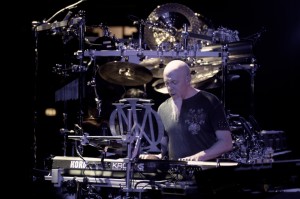
Rudess Behavior: Was there a conscious effort to compose music for LMR, or improvise it? Levin: “Jordan and I did quite a bit of jamming together, ready for Marco to play to, but we had so much good quality material written that there just wasn’t need to further develop the improv material.”
METTLER: You’re been on the road with Peter Gabriel for over a year, and counting. I saw the So — Back to Front tour in Philadelphia last year [on September 21, 2012], and was consistently impressed by the live sound quality. And I also appreciate being able to have an official soundboard version of the show I attended — a soundboard for The SoundBard, as it were. Why does So continue to have such an impact?
LEVIN: We’ve been having a great time out here on the road, doing the So music and tour quite close to the way we did it back in 1987, and with the same band. I can’t say there are favorite songs in the show for me — I’m somewhat equally happy during the whole show. It’s great being part of a band, and a production, that’s really giving the audience what they want. Peter’s ideas about show production are pretty groundbreaking, and the way the lights and crew choreography add to the music in the show is quite special. I can’t resist photographing quite a bit of the show, even while I’m playing in it, so my online diary has become a nice way to get the feel of the tour — both for those of us on it, and for the fans who came to shows and like seeing the “band’s-eye” photos.
METTLER: A number of Peter Gabriel’s tours are available on Blu-ray [New Blood: Live in London, Secret World Live, and Live in Athens 1987]. Do you like the Blu-ray format?
LEVIN: I’m not an expert at formats, but I can say that we just recorded this show in a very hi-def format (4K Ultra HD) on October 21 and 22 [at the O2 Arena in London]. It’ll be great to have a concert film made to commemorate this tour. I can’t tell you when the show video will be out, or even in what manner and format. I hope to find out myself before long! [Keep soundbard.com bookmarked for updates —The SoundBard]

Minnemann of Action: The drummer gave the bassman excellent aural blueprints to work with for LMR, says Levin: “As for the bass parts I played, Marco sent me tracks where he had played not just drums, but guitar and bass, too — the bass to give me a sense of where he was going. In some cases, I played a different part altogether; in others, I played somewhat what he had, keeping the essence of it, but giving my own flavor to the part — and in a couple of cases, I played exactly what he’d suggested for the bass part. ”
METTLER: Ok, Scott, your turn. Tell me what your favorite surround mixes are, and why.
SCOTT SCHORR: My favorite 5.1 mixes are anything that Steven Wilson touches. I see Steven as the modern-day Phil Spector meets John Lennon. One thing I love about his 5.1 mixes is they always seem to stay as close as possible to the original mixes. However, in 5.1, he allows everything to breathe. Just listen to “Elephant Talk” [from King Crimson’s 1981 album, Discipline] on a great surround sound system. Tony Levin’s stick seems to bounce from one speaker to the other. Bill Bruford’s drum sound is incredible, and his snare is tighter and brighter than it usually is. Another Crimson album Wilson remixed, [1970’s] Lizard, is incredibly experimental, and would scare the average listener. But for the hardcore fan, the separation of the instruments in 5.1 is why the medium is growing as fast as it is.
In the original stereo mixes of Lizard, there’s so much stuff going on that it’s sometimes hard to decipher all the parts in the original stereo mix versus 5.1. And to consider that Robert Fripp was occasionally standing over Steven while he was mixing the Crimson catalog in 5.1? Now that is pressure!
I also know this is sacrilegious in some circles, but I’m a big fan of the ’70s classic records when they’re converted from analog to digital for 5.1. It just seems to “crispen” everything up and add clarity to all the instruments — without sacrificing all the warmness. And I’m super-anxious to hear Steven’s 5.1 remix of Yes’ Close to the Edge, one of my all-time favorite records. [Me too! —The SoundBard]
METTLER: Back to you Tony, with a quick barrage of Qs to wrap this up. What was the first record you bought with your own money? Does it still resonate with you today? Do you still have a copy of it? Do you still like the vinyl format?
LEVIN: I’m afraid I don’t remember that. (It was a long time ago!!) I was a classical music fan from a young age and listened to a lot of material, probably mostly on the radio. I did like the vinyl format, and somewhere I have my records from my teens — but like with the CDs I’ve collected, I don’t have much time to listen anymore. Happily and luckily, I’m too busy making new music most days.
Above, an exclusive YouTube clip of Levin Minnemann Rudess tackling the mysteries of “Scrod”
]]>